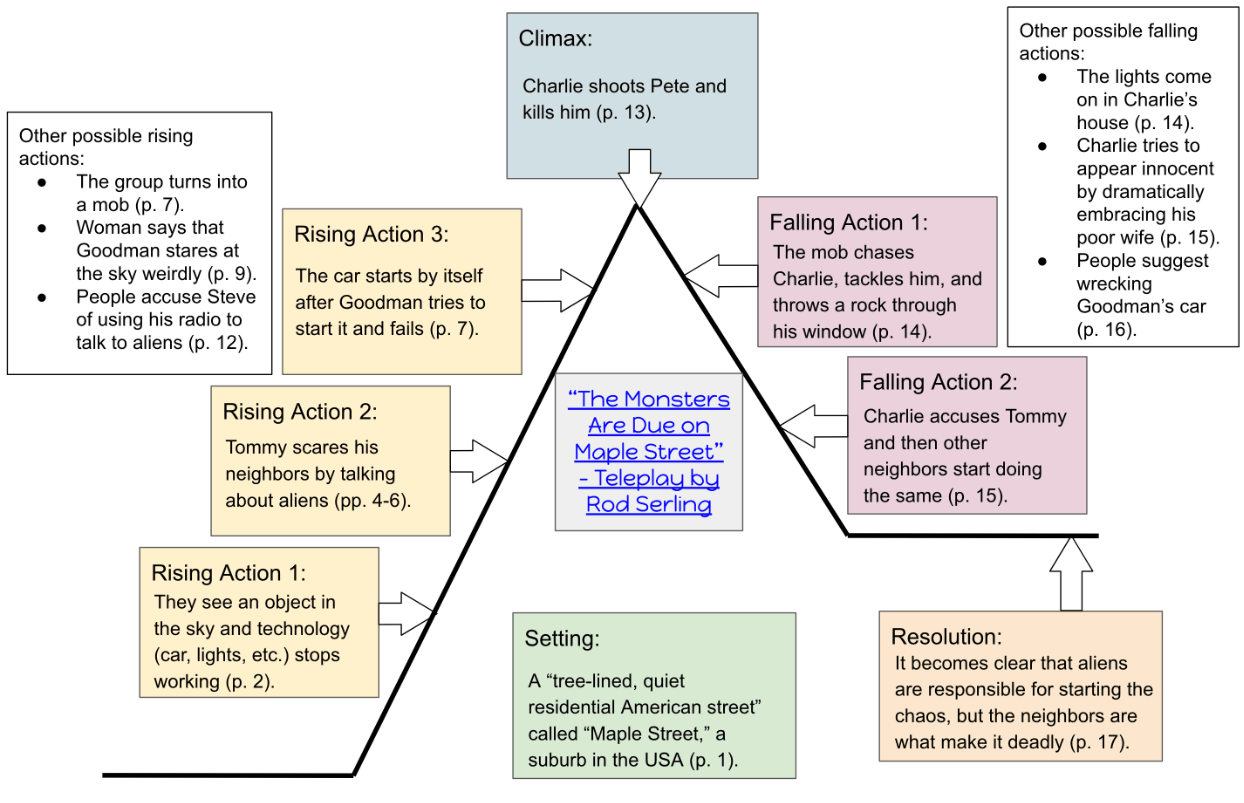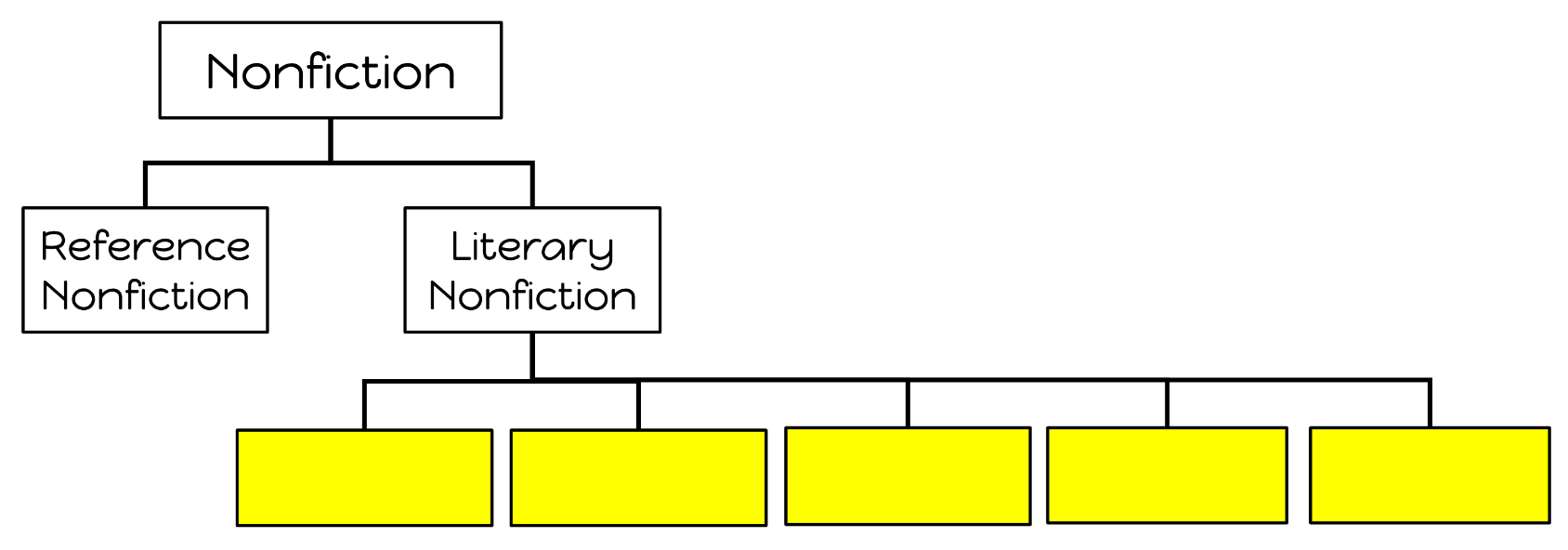True or false? The "central idea" is also known as the "topic" of the text.
False!
Central ideas are explained in a full sentence, while topics are usually one word (such as "Courage," "Kindness," "Acceptance," or "Honesty).
The narrator of a poem is called the ________.
Speaker
Which of the following is NOT an element of fiction?
Character, plot, conflict, claim, point of view, setting, style, theme
Claim
What is ONE reason that authors use nonfiction text features (such as bold, italics, captions, diagrams, and headings)?
To grab the reader's attention or highlight something important, to organize sections of information and make the text easier to navigate, to help readers visualize what the text is explaining or clarify an idea, etc.
What are the THREE types of author's purpose?
1. To inform or teach
2. To entertain
3. To persuade or convince
True or false? Middle school students do not take a science EOG.
False
8th graders take Science 8
Fill in the blanks below with "theme" and "central idea":
_______ is USUALLY found in fiction, while _______ is USUALLY found in nonfiction.
1. Theme
2. Central Idea
A unified group of lines in poetry, often marked by spacing between sections of the poem, is known as a(n) ________.
Stanza
This image is an example of a ___________.

Plot Map / Plot Diagram
List ALL FIVE types of literary nonfiction.

1. Narrative
2. Biography
3. Memoir (Autobiography)
4. Speech
5. Essay
What are the TWO ways you can use text evidence in your writing or explanations?
1. Quote (author's words)
2. Paraphrase (your own words)
EOGs start in grade ___ in North Carolina.
3
A _______ is more general and usually can be applied to real life, not just the text or story.
Theme
"Life is a broken-winged bird" is an example of what type of figurative language?
Metaphor
The terms "Round" and "Flat" describe a character's complexity, layers, or personality, while the terms "static" and "dynamic" describe a character's ____________ over time (throughout the story).
development
What is the last sentence in an introduction paragraph in argumentative writing?
Thesis statement
Why is it important to use text evidence?
To support your reasoning, explanation, or claim/argument.
The 7th grade reading EOG contains passages that are fiction, nonfiction, and ________.
Poetry
Which of the sentences below shows theme and which shows central idea for "The Lion King"?
_______ - A young lion cub rises up to defeat his evil uncle and reclaim the kingdom.
_______ - Everyone has to eventually leave childhood behind to face adult responsibilities.
1. Central Idea
2. Theme
Poetry that does not rhyme or have a measurable meter is known as ______ _______.
Free verse
In the novel Flush, the author includes many references to sailing and fishing. These references require the reader to have this.
Background or prior knowledge
_________ nonfiction gives factual information in an entertaining (story-like) way, while _________ nonfiction just gives the factual information.
(1) Literary; (2) reference
Read the short passage below. What is the author's most important purpose for writing the selection?
A wave is any movement that carries energy. Some waves carry energy through water. Others carry energy through gases, like air, or solid materials. If you drop a rock into a pool of water, a wave, or ripple of energy, skims across the pool's surface.
To INFORM readers about different kinds of waves
The 7th grade reading EOG has ___ questions.
52
Julia’s report card reflected poor grades. She felt she would get in trouble, so she hid her report card from her parents. When her parents discovered what her grades were, they grounded her for trying to hide the truth.
What is the theme of this paragraph?
The truth always comes out in the end.
_______ refers to the author’s attitude toward a certain topic. Through specific word choice, the author reveals their feelings and opinions to the reader, conveying the author’s intentions behind the text. It is always described using an adjective.
Tone
A theme statement is different from a theme topic. Give 3 examples of theme TOPICS.
Love, family, betrayal, trust, confidence, coming of age, etc.
What is the difference between a REASON and EVIDENCE in argumentative writing?
A REASON is why you think your claim is true, while EVIDENCE is a fact, statistic, or other "proof" to support your reason.
If you use information from a source you did not create and DON'T cite it correctly, this is called _________.
Plagiarism
You need ____% of questions correct to get a 3 on the 7th grade reading EOG.
59%